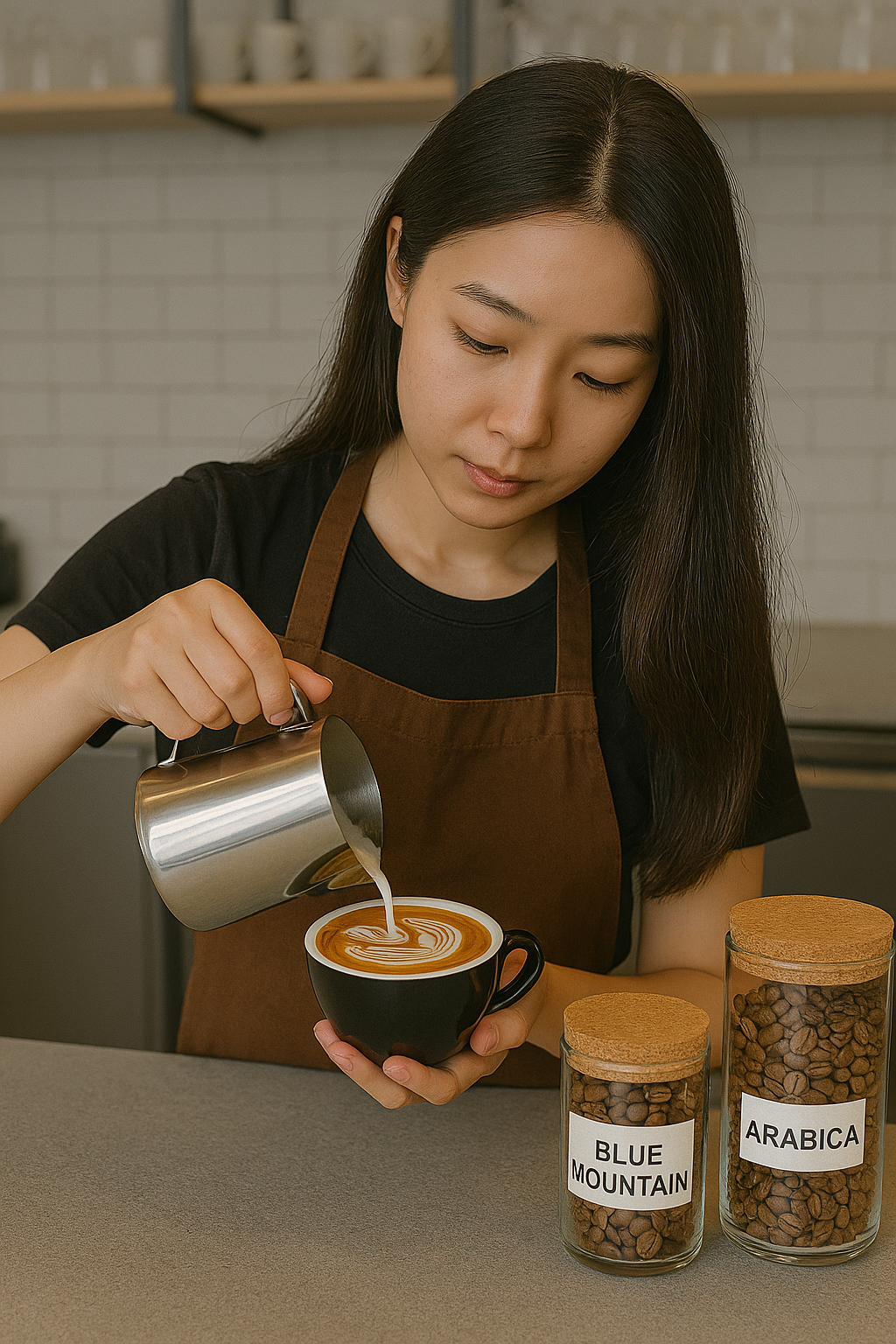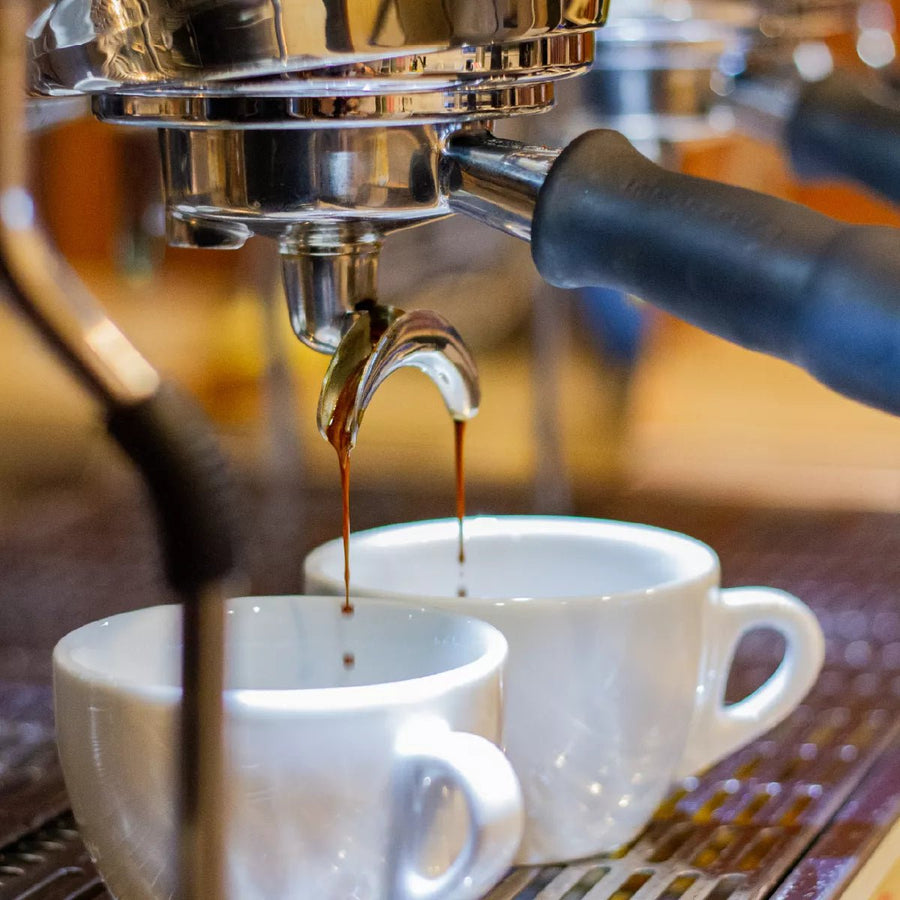Where to Buy Genuine SOE Single Origin Espresso Online
Wiki Article
Checking Out the Rich Flavors of Coffee Beans: a Deep Study Espresso and Blended Coffee Beans
When you discover the rich tastes of coffee beans, you uncover a complicated globe where each selection brings its own personality to your cup. As you navigate with the art of espresso and the creative thinking behind mixed coffees, you'll start to value the nuances that make each sip one-of-a-kind.The Origins of Coffee Beans: Discovering Terroir and Taste Profiles
When you take a sip of coffee, you're not just delighting in a drink; you're experiencing a rich tapestry of flavors shaped by the beans' origins. Each region generates one-of-a-kind flavor profiles influenced by elevation, dirt, and climate. Beans from Ethiopia frequently burst with brilliant, fruity notes, while those from Colombia have a tendency to supply a well balanced, nutty sweetness.As you explore various beginnings, you'll notice exactly how terroir-- the ecological aspects impacting a crop-- plays an important duty - Single Origin Espresso. The same coffee selection can taste drastically different depending on where it's expanded
When you consider these aspects, you start to value the intricacy behind your mug. Each sip narrates of the land and the farmers that nurtured the beans. Next time you delight, believe regarding the journey your coffee took prior to it reached your hands, and relish those complex tastes that show its origin.
Understanding Espresso: The Art and Science Behind the Brew
When you think of espresso, it's not practically the solid taste; it's also concerning the techniques that bring it to life. Recognizing exactly how different prep work methods impact preference can transform your brewing experience. Let's check out the intricacies of coffee prep work and uncover the unique taste accounts that make each mug special.Coffee Prep Work Techniques
Espresso prep work is both a science and an art, integrating accurate techniques with a deep understanding of coffee. To begin, you'll intend to select premium, newly baked beans and grind them finely for optimal extraction (Single Origin Espresso). The grind dimension is crucial; as well rugged, and your coffee will certainly be weak, as well fine, and it'll be bitterFollowing, tamp the grounds evenly in the portafilter to guarantee consistent removal. When you secure it into the machine, go for a developing temperature in between 190 ° F and 205 ° F.As you pull the shot, expect the excellent extraction time-- around 25-30 secs. The result needs to be a rich, velvety coffee with a gorgeous layer of crema on the top. With technique, you'll master these methods.
Flavor Accounts Clarified
The world of espresso offers an abundant tapestry of taste profiles that can raise your coffee experience. Light roasts frequently showcase bright acidity and vibrant tastes, while dark roasts present much deeper, bolder tones.Comprehending these accounts assists you select the ideal espresso for your taste. Experimenting with various blends can disclose surprising mixes. A well-crafted blend may harmonize the bright notes of an Ethiopian bean with the rich, chocolatey touches of a Brazilian bean. Welcome the trip of uncovering coffee's varied tastes, and you'll change your coffee routine into an exciting journey.
Processing Approaches: Exactly How They Influence Taste and Fragrance
While it may appear that the beginning of coffee beans is the most substantial consider identifying their flavor and aroma, the processing methods made use of post-harvest play an equally crucial duty. You'll discover that these approaches can substantially alter the last taste profile of your cup.For example, the washed procedure removes the fruit from the beans before fermentation, frequently resulting in a cleaner, brighter flavor. At the same time, the all-natural process leaves the fruit undamaged throughout drying, resulting in a sweeter, fruitier account.
Other approaches, like honey handling, strike an equilibrium, enabling some fruit mucilage to stay, giving a distinct complexity.
Each processing technique interacts with the beans' fundamental attributes, boosting or muting details tastes and scents. When you sip that espresso or mixed coffee, remember that the journey from cherry to cup is affected not simply by origin but also by how those beans were processed.
Roasting Techniques: Opening the Full Potential of Coffee Beans
Roasting techniques are important for exposing the full possibility of coffee beans, as they transform raw, green beans into the aromatic, tasty coffee you appreciate. The selection of roasting approach-- light, tool, or dark-- considerably affects flavor profiles.A slower roast at reduced temperatures allows for intricate tastes to develop, while a quicker roast can magnify resentment. By grasping these techniques, you'll reveal a globe of taste, elevating your coffee experience to brand-new heights.
The Magic of Blended Coffee: Producing Distinct Taste Experiences
Creating an unique flavor experience with blended coffee can transform your morning routine into an expedition of preference. By incorporating various beans from different areas, you can expose a symphony of flavors that boost your mug to brand-new heights. Each mix deals an unique profile, balancing sweet taste, level of acidity, and body to produce something truly special.When you pick a blend, you're not simply selecting a coffee; you're selecting a trip across diverse landscapes and societies. Try out various combinations permits you to find your individual favorites, whether you delight in fruity notes or abundant, chocolatey undertones.

Tasting Notes: Recognizing the Nuances in Your Cup
As you drink your coffee, you might notice a range of tastes dancing on your palate, each disclosing the complexities of the beans. You may taste the intense level of acidity reminiscent of citrus or the deep, abundant notes similar to dark delicious chocolate. The sweetness can stimulate honey or caramel, balancing the total account perfectly.Focus on the body of the coffee-- does it really feel airy and light, or is it complete and luscious? The finish, also, uses ideas; a lingering aftertaste might mean nuttiness or flower undertones.

Do not fail to remember to check out the special qualities of different origins, as each region gives distinct flavors - Single Origin Espresso. Ethiopian coffees often present fruity notes, while Colombian beans could showcase an extra spherical sweet taste. By identifying these nuances, you'll deepen your appreciation for each cup, raising your coffee experience to new heights

Brewing Approaches: Making The Most Of Flavor Removal for every single Bean
When you discover the different developing techniques, you'll find that each strategy can significantly affect the taste account of your coffee. From French press to pour-over, each technique essences different substances, improving or muting specific notes. Using a French press enables oils to stay in the mixture, producing a richer taste, while pour-over highlights clearness and brightness.Temperature level and grind dimension also play crucial functions. A coarser work works best for chilly brews, while a great grind is perfect for espresso. Try out water temperature-- in between 195 ° F and 205 ° F-- can disclose surprise tastes, as well.
Do not ignore soaking time; a quick extraction can cause sour notes, while over-extraction may generate bitterness. By adjusting these variables, you can optimize taste removal and genuinely boost your coffee experience. Delight in the journey of uncovering what approach best fits your taste buds!
Often Asked Concerns
What Is the Ideal Water Temperature for Developing Coffee?
The optimal water temperature level for developing coffee's between 195 ° F and 205 ° F. If you use water that's also warm, you'll over-extract flavors; also chilly, and you will not extract enough. Go for that wonderful area for the finest brew!Exactly How Does Grind Dimension Affect Coffee Flavor?
Grind size significantly influences coffee taste. Better grinds extract extra oils and flavors, causing a bolder taste, while coarser grinds return a lighter flavor. Adjusting work size helps you accomplish your desired coffee account.Exist Health Benefits Linked With Drinking Coffee?

What Is the Difference In Between Arabica and Robusta Beans?
Arabica beans are smoother and sweeter, usually including fruity tastes, while robusta beans are stronger with a bitter taste and higher high levels of caffeine material. You'll observe these differences in fragrance and developing experience.How Can I Store Coffee Beans for Freshness?
To save coffee beans for quality, maintain them in an impermeable container, away from light, heat, and wetness. You'll maintain their taste much longer if you just grind what you need right prior to developing.Exploring the Abundant Flavors of Coffee Beans: a SOE Deep Dive Into Coffee and Blended Coffee Beans.
When you check out the rich tastes of coffee beans, you uncover a complicated world where each range brings its own character to your mug.When you take a sip of coffee, you're not just enjoying a drink; you're experiencing a rich tapestry of tastes shaped by the beans' beginnings.Roasting techniques are crucial for disclosing the full possibility of coffee beans, as they change raw, environment-friendly beans right into the aromatic, flavorful coffee you enjoy.As you sip your coffee, you might notice a spectrum of tastes dancing on your taste, each disclosing the complexities of the beans.
Report this wiki page